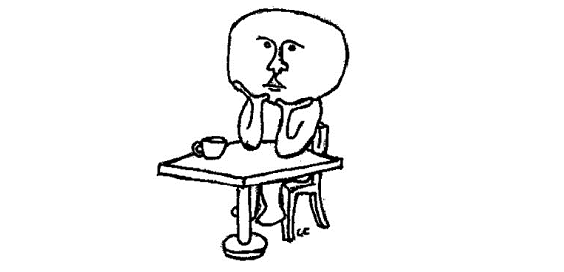You may have heard the rumor: the newspaper, the independent bookstore, the publishing industry and print media in general — they’re all dying. In a digital world where everyone and his mother can publish an e-book and news all comes from Google or Facebook, the good old typeface on paper is dead and we have killed it.
“Woe is me!” cry all you English majors. “I will never be able to attain the corner office at Random House/Harper Collins/Penguin. I will never be a travelling journalist for National Geographic. I will never own my own bookstore. I will never be the editor of The New Yorker/The New York Times.”
You know, you’re probably right. By the time you graduate and finish your requisite two or three years working at a local coffee shop, these careers may be unrecognizable. But I would like to contend that they will not be gone — simply different.
Due to the deja vu I’m experiencing as I write this, I’m pretty sure I’ve written an editorial about the future of newspapers before. It was probably about how quickly the field is changing, and how daunting it can be. Nothing you haven’t heard before. But I’ve come across a new idea, and I think it’s worth sharing.
I recently read an interview with an e-book publisher named Jason Ashlock. The interviewer noted that he didn’t have the usual “black cloud of doom” that tends to linger over those in the publishing world these days, and it’s because he’s accepted the changes and is running with them.
The interview was mainly about self-published e-book authors and the struggle they face when trying to publicize their work. “Obscurity is the greatest enemy” in publishing today, said Ashlock. Because book reviews are no longer written strictly by professionals, consumers don’t have a reliable judge of media to trust.
Ashlock claims that the next big move in the publishing world will be the birth of many websites devoted to reviewing a certain type of book. He uses the term “curators,” to describe the new role of reviewers and publishers, and predicts that these sources will learn to focus on a certain type of book and promote it well.
To a certain extent, this is already happening. Sites like Pitchfork (“indie” music) and and Plugged In (movie reviews from a Christian perspective) have chosen their audiences and are sticking to them. Those of us who read enough reviews also learn which critics we agree with the most; I’ll see anything Roger Ebert tells me to. It’s easy for me to imagine future review sites with specific focuses — British media, urban productions, children’s media … the possibilities are endless.
Why, I thought to myself as I finished the interview, can’t newspapers begin to follow this same schema? In the current climate, we all have our favorite news sources. The reasons we like them are varied — maybe we like the layout of their website, the quality of their photos, the diversity of their coverage or their editorial sections. And though all news sources today are reportedly “unbiased,” we all know the stereotypes. NPR and Huffington Post? Liberal. Fox News and The Wall Street Journal? Conservative. These sources would never admit a bias and generally work to present themselves as moderate, but the divisions are usually clear.
I’d say the time has come to embrace those partialities. In a media climate where everyone is straining to be noticed, why not tailor to our audiences? Perhaps it’s time for newspapers (along with reviewers, bookstores, and publishing houses) to become curators, discussing only the stories, books and albums that appeal to their specific audiences.
The new way to stick out? Go small.



